Whiteseam fighter - Betta albimarginata
Scientific name: Betta albimarginata
Common name: Whiteseam fighter
Family: Osphronemidae
Usual size in fish tanks: 4 - 5 cm (1.57 - 1.97 inch)
014
Recommended pH range: 6 - 7.5
Recommended water hardness: 4 - 16°N (71.43 - 285.71ppm)
0°C 32°F30°C 86°F
Recommended temperature range: 22 - 26 °C (71.6 - 78.8°F)
The way how these fish reproduce: Spawning
Where the species comes from: South Asia
Temperament to its own species: peaceful
Temperament toward other fish species: peaceful
Usual place in the tank: Middle levels
Food and feeding
The Whiteseam Fighter is a carnivorous species that thrives on a varied diet. While they will accept high-quality flake or pellet food, their preference leans toward live or frozen food. Offer them a mix of live foods such as brine shrimp, bloodworms, micro worms, and Cyclops. These foods mimic their natural diet and help bring out their best coloration. Feeding should be done once or twice a day, providing only what they can consume in a few minutes to prevent overfeeding and maintain water quality.
Origin
The Whiteseam Fighter (Betta albimarginata) originates from the slow-moving rivers and forest streams of Borneo and Kalimantan in Southeast Asia. These areas are known for their soft, slightly acidic waters, shaded by dense vegetation. In their natural habitat, Whiteseam Fighters are used to stable, clean water conditions, which should be replicated in the aquarium to keep them healthy and stress-free.
Sexing
Sexing Whiteseam Fighters is relatively straightforward. Males display more vibrant coloration, especially during breeding periods, with a bright contrast between their body and their white fin edges. Females tend to be duller in appearance, often appearing less colorful and slightly smaller than males. Observing them during feeding or courtship behaviors can also help differentiate the sexes.
Breeding
Whiteseam Fighters are mouthbrooders, which means the male takes care of the eggs after spawning. To encourage breeding, provide soft water with a slightly acidic pH and plenty of hiding spots such as Java moss or Cryptocoryne plants. Once the female lays the eggs, the male will collect them in his mouth and incubate them for 10-14 days. During this period, it's essential to minimize stress on the male by avoiding excessive tank activity. Once the fry are free-swimming, they can be fed newly hatched brine shrimp or Cyclops. The fry will grow quickly and should be separated from adult fish to avoid predation.
Lifespan
With proper care and ideal water conditions, the Whiteseam Fighter can live for 2-3 years. To maximize their lifespan, ensure a stable environment with regular water changes and a balanced diet.
Tank Requirements
Whiteseam Fighters are small, peaceful fish that do well in aquariums of at least 30 liters (8 gallons). They prefer soft water with a temperature range of 22-26°C (71.6-78.8°F) and a pH between 6.0 and 7.5. Moderate water hardness (4-16°dGH) is suitable for them. As they occupy the middle levels of the tank, make sure the aquarium has plenty of open swimming space, along with plants like Cryptocoryne or Anubias to provide hiding spots and mimic their natural habitat.
Good filtration is essential for maintaining water quality, but ensure the water flow is gentle as Whiteseam Fighters prefer slow-moving waters. Perform regular water changes to keep the environment clean and free from toxins.
Tankmates
Whiteseam Fighters are peaceful and can be kept in community tanks with other small, non-aggressive species. They are best kept in groups of their own species, but they can also be housed with fish like:
- Ornate Cory (Corydoras ornatus)
- Panda Corydoras (Corydoras panda)
- Albertini corydoras (Corydoras pantanalensis)
- Rummy-nose Tetra (Hemigrammus bleheri)
Avoid aggressive species or fast swimmers that might outcompete them for food or disturb their calm environment.
Short Description
The Whiteseam Fighter (Betta albimarginata) is a peaceful Betta species known for its striking white-edged fins and calm temperament. Unlike many Betta species, they can be housed in pairs or groups without aggression. These fish prefer soft, clean water and thrive in well-planted aquariums with minimal current. Their small size, peaceful demeanor, and unique appearance make them an excellent choice for aquarists looking to add a distinctive species to their community tanks. Regular water changes and a varied diet will keep them healthy and vibrant in color.
Pictures
Thanks to Ted! Some pictures were bought from jjphoto.dk.











 Akar
Akar 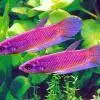 Giant
Giant  Betta
Betta 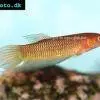 Slender
Slender  Betta
Betta 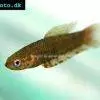 Brown’s
Brown’s  Snakehead
Snakehead  Wine
Wine 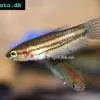 Edith’s
Edith’s 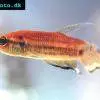 Blue
Blue  Betta
Betta 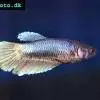 Peaceful
Peaceful 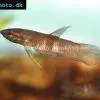 Kapaus
Kapaus  Eyespot
Eyespot  Spotted
Spotted 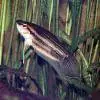 Forest
Forest 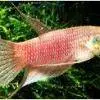 Schaller’s
Schaller’s  Siamese
Siamese  Chukai
Chukai 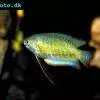 Banded
Banded 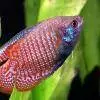 Dwarf
Dwarf 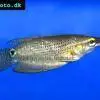 Frail
Frail 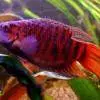 Paradise
Paradise 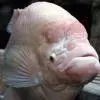 Giant
Giant  Giant
Giant  Licorice
Licorice 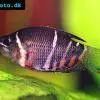 Chocolate
Chocolate  Honey
Honey  Thick
Thick  Pearl
Pearl  Moonlight
Moonlight 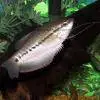 Snakeskin
Snakeskin  Blue
Blue